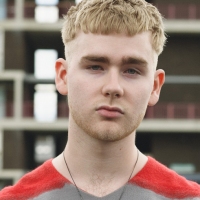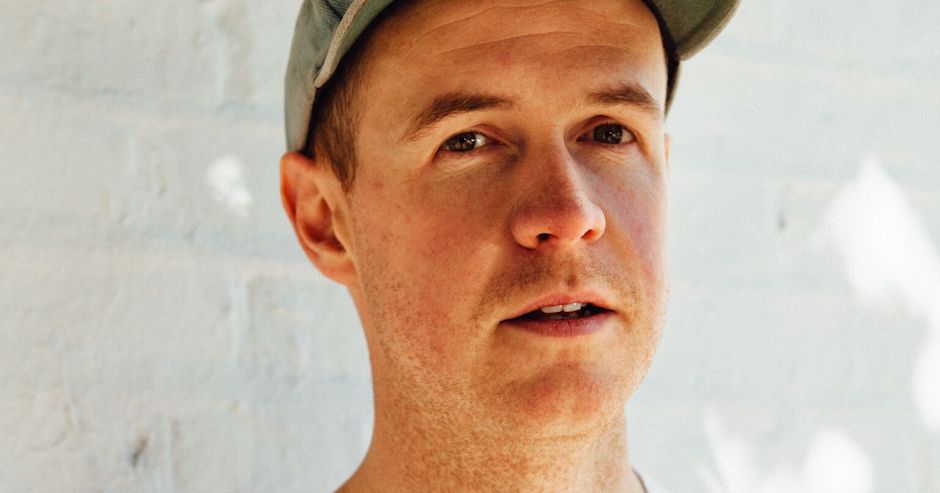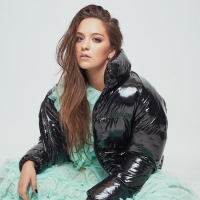 Mura Masa, Nao and Skrillex make summery magic on ComplicatedThe sun-stroked new single is the second from the British producer in recent months.
Mura Masa, Nao and Skrillex make summery magic on ComplicatedThe sun-stroked new single is the second from the British producer in recent months.

Interview: Contrasting "LIGHT" and "DARK" with Christopher Port
The Melbourne producer's latest EP is now through Pieater/Future Classic, and comes with a handful of club dates this September.
Header photo by Ro Murphy.
Finding a balance in dance music is often harder than it looks, and it shows. There have been countless times when producers - especially those among the top ranks of EDM and electronica - blurt out quotes accompanying singles about "mixing heavy drops with melodic verses", but when it comes to the single itself, these 'melodic moments' may just be a warped synth line dropped in without context amongst crushing bass that overshadows it anyway. Or perhaps worse, what I like to call The Chainsmokers approach - a copy-and-paste-sounding melodic relief between clunky breakdowns that naturally just don't mould and fit well together. It seems that electronic acts are always attempting to find this contrast, and many of them fail. But when it works, oh boy, it works.
Melbourne's Christopher Port is an artist that can make this work, and although his material is a far-stretch from those these cookie-cutter trap artists make, his balance of light and dark in electronic is almost incomparable. On his aptly-titled, two-part EP series "DARK" and "LIGHT", Christopher Port can find this balance masterfully, no matter whether we're talking within songs, between songs or between EPs. "DARK", the first half of the series which arrived late last year, is obviously centred on the darker side of his sound, often mixing brooding synth lines with intricate sampling and percussion that shines with his UK garage influence. Meanwhile, "LIGHT" - arriving today as a result of a partnership between his long-time label Pieater and established Australian electronic tastemakers Future Classic - is focused on the brighter and arguably more club-centric side of Christopher Port, with each of the EP's four tracks soaked with some kind of warmth - even on the EP's more down-tempo moments like What I Leave Behind.
Even excluding "DARK" from the equation, "LIGHT"'s central theme seems to be contrast and variance. Singles like the leading club thumper DTF and the sample-thick closer Find A Way - both highlights of Port's musical output thus far - are obviously more up-tempo and dancefloor-ready than some of the EP's softer moments, like the aforementioned track What I Leave Behind or the slightly Jamie XX-reminiscent Bandcamp favourite Me & My Heart. It's a dynamic and versatile release that further solidifies Christopher Port's status as one of Australia's leading and arguably most over-looked producers - something we've claimed multiple times in the past - and for Port, signals a sense of connected closure after a release-dense twelve months. "It’s nice to have this chapter of my music completed and all under the umbrella of Everything in Quotes," he says on the EP. "It feels like it’s come full circle and that it’s now time to move on to the next chapter, whatever that may be."
With "LIGHT" out now and an east-coast club tour scheduled in for September - dates at the end of this interview - we briefly caught up with Christopher Port to talk about the two-EP release, his love of sampling, UK dance music and fashion, and how Future Classic and Pieater really helped his music shine. Dive into the EP below, and grab it HERE.
Hey Chris – congratulations on the release on the new EP. “LIGHT” is the follow-up from your “DARK” EP last year – can you tell us your thinking process behind releasing two contrasting, but related EP releases instead of one larger release and where the idea came from?
Thanks so much. My thinking behind doing the two EPs was mainly inspired by the American Architect/Designer Virgil Abloh. He has been putting everything he designs in quotes, whether its a bag or a shoe or a rug. The reason he does this is to imbue each object with a sense of irony, to not take things so seriously. To take them out of the context in which they are usually in. Hence the name Everything In Quotes.
While making the tracks that would eventually become the “Dark” EP I was thinking a lot about how so much electronic music, particularly in Australia gets called “Dark” as if by merely putting that label on it will give it some legitimacy. It’s the same way I feel about the word “Ethereal”. I just thought it would be funny to call an EP “Dark”, to kind of take the piss out of all the “Dark” labels that get put on things. The same goes for “Light”, it probably could’ve been called something like “Sad” & “Happy” haha.
They’re contrasting releases built off each other, but was the process of creating them the same? Or were they recorded at different times, under different circumstances etc.
They were made pretty much the exact same way. I guess having finished “Dark” first helped guide the kind of tunes that could work for “Light” so as to make sense together, but other than that the process was the same. I usually make a whole bunch of tracks before I think of narrowing down the ones that will be on the EP. I made probably around 15 tracks total before narrowing down to the eight that are on the two EPs. I try and just put myself in a general state of mind and surround myself with things that inspire me while I make music. I try and detach myself from ever thinking whether or not a track will be released and just focus on making each track as it wants to be made, kind of get out of the way of my own creativity.
Just between the tracks on “LIGHT” there’s contrast too – both DTF and Find A Way are quite upbeat and club-centric, while the other two are more down-tempo. Is there any difference between the mindset or studio habits you have when creating upbeat ‘dance music’ vs. your more down-tempo work?
Well, the studio habits remain the same. I do tend to stand up and move around a lot more when I’m making a more club focussed track, whereas I’m probably a little more calm and focused when I’m making a more downtempo track. However, the goal is always the same, to make something that communicates clearly, whether that be making people dance or making them think or making them laugh. DTF, in particular, was kind of the result of trying to do all three.
However, in my more downtempo tracks, I do strive for a kind of tenderness that I don’t normally think much about when making club music. It is also a very intuitive kind of thing and depends on the samples, particularly vocal samples, I use. I always try and let the vocal lead the way.
Find A Way is built around this (what I assume to be) vocal sample. Can you tell us this sample, the process behind the sample to where it is now, and your relationship with sampling?
Yeah, it’s from a free Rare Soul sample pack that I got ages ago somewhere on the internet. It’s actually the first time I’ve ever used something from a designated sample pack. The sample has a full band, so it took quite a bit of EQ work to isolate the vocal. I’m very passionate about sampling. I really feel like the hysteria around people using samples or using similar chords to other songs etc. has gotten way out of control recently. I guess its a cyclical thing. I like watching old documentaries about the rise of sampling and how appalled people were when it first began. I find those things really hilarious.

Your work is heavily influenced by UK garage – is there anything from the UK approach to dance music that you wish would be adopted in Australia – or Melbourne? I’ve read in interviews with Four Tet, Floating Points and co. that there’s a really big ‘community’ factor in UK dance which I feel like is missing from Australia.
Absolutely, I do wish community played a bigger role in the Australian scene. There are definitely great scenes around Melbourne and Australia in general, but they are quite small and rarely mix together. They can tend to keep to themselves which is sad. I do think the independent radio scene in the UK plays a much bigger role there than it does here. It’s slowly starting up here which is cool, so I think in a few more years it’ll really pick up which is exciting.
The two EPs were released in partnership with Pieater – your long-term label – and Future Classic. Can you tell us about that relationship and how the two sides have affected you and your music?
The relationship with Pieater grew out of me playing in the live bands of Big Scary and Airling. Working on my own music over time, I showed it to Tom & Jo and they liked it enough to put it out which was crazy. So that’s where it all started. With Future Classic, I met Ed & Dan for the first time in Sydney when I played at Volumes Festival - they came and saw me play which was cool. We got chatting and just kept in touch. I always liked catching up with them whenever I was in Sydney purely because they were fun to hang out with. At some point, the idea of working on a split record with Pieater came up and we all thought it was a great idea so we went with it and these two EP’s are the result so far.
Both labels are super supportive and have given me the time and resources to push my music further. I think Pieater gave me the confidence to follow my own path in the early days before I’d released anything and I think Future Classic has given me the confidence now to think of my music in a more global context instead of just an Australian one.
With both labels now it just feels like one big family, I feel very lucky.
Before the ‘Christopher Port’ project, you were heavily involved with a lot of Pieater projects – Airling, #1 Dads, Big Scary and so on. How did your time working with these acts influence your own music and your approach to production and songwriting?
Well, Tom Iansek has been a part of all of those projects you mentioned. He has had such a profound effect on me as an artist, not just in a production or song-writing sense but in more of an overall artistic sense. My music is obviously very different but working with him has been such a fruitful learning experience. The biggest influence he has had on me is seeing what music means to him and watching him work. It’s a very holistic process for Tom - he takes his time, he doesn’t rush things, and his connection to his own creativity is very profound and completely wrapped up in who he is as a person, not just an artist. Tom is a very thoughtful and caring person and I think this comes through in all of the projects he is involved in.
Also, Jo from Big Scary has had a huge influence on me as an artist and as a person. The way she conducts herself as an artist and label manager is very inspiring. She is very caring, considerate and really brings a passion and joy to everything she does.
“DARK” came with a clothing line inspired by Virgil Abloh – who you mention also inspired the EP concept. Do you gain inspiration from fashion and streetwear culture? If so, how do you channel that inspiration into the Christopher Port project?
Yeah, Virgil Abloh has been a huge inspiration for me. His creativity is similar to Tom Iansek’s in the sense that it is completely holistic. His ideas and inspirations come from who he is, where he’s from and where he’s going. Fashion is a huge inspiration for me, in a purely creative way but also from a cultural perspective. Fashion and culture are so closely linked in every way and every genre of music has it’s own fashion codes that are closely linked to the music. This is the whole reason I wanted to make clothes to go along with the music as fashion has been a great source of inspiration and has affected the way my music gets made and how it sounds.
Tour Dates:

Follow Christopher Port: FACEBOOK
 Mura Masa, Nao and Skrillex make summery magic on ComplicatedThe sun-stroked new single is the second from the British producer in recent months.
Mura Masa, Nao and Skrillex make summery magic on ComplicatedThe sun-stroked new single is the second from the British producer in recent months.
 Photo Diary: CXLOE takes us behind the scenes of her soaring new single, Show YouShe's one of the many exciting young artists you can catch at BIGSOUND this year.
Photo Diary: CXLOE takes us behind the scenes of her soaring new single, Show YouShe's one of the many exciting young artists you can catch at BIGSOUND this year.